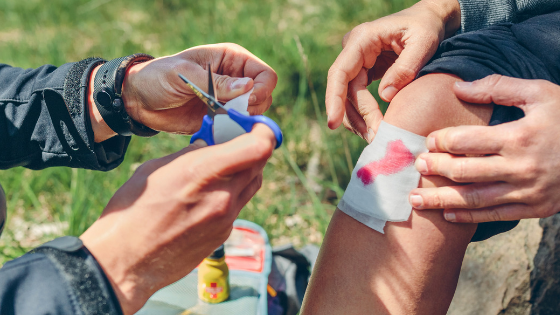
Accidents can always happen, and knowing basic first aid could mean the difference between life and death. While we don’t all need to be qualified doctors, there are a few things we should learn just in case of an emergency.
Below we are going to take a look at five first aid skills everyone should know.
Let’s get started.
General Wound Care
Without a doubt, things like scrapes, cuts, and abrasions are some of the most common injuries. Thus, it makes sense that you should know how to care for them properly. Even something small can become quickly infected, resulting in a hospital visit. Keep plenty of bandages, medipore tape, and antiseptic wipes in your first aid kit, and restock them frequently. This way, you are always prepared for any accidents.
Burn Treatment
Much like cuts and scrapes, burns are something that we have all probably had at some point in our life. However, some are more serious than others. Learning how to treat and manage them properly reduces the risk of scarring and can decrease their overall damage. Remember there are three types of burns, and they will need to be treated differently. They include:
First-degree burns: Mild burns that only harm and cause pain to the outer layer of the skin. They generally heal quickly.
Second-degree burns: Partial-thickness burns that affect both the outer layer and lower layer of the skin. They cause swelling and blistering.
Third-degree burns: Full-thickness burns that affect deep tissue. They are the most serious and can completely char the skin.
Stopping Heavy Bleeding and Shock
Injuries that result in heavy bleeding are severe, and it’s essential to know how to stop it as soon as possible. Pressure should be applied to the wound consistently until emergency services arrive. During this time, shock may also set in, so understanding the signs and symptoms is crucial. If you suspect a person is in shock, you should:
– Treat any injuries as best you can.
– Lay them down and elevate their feet 12 inches. (Unless the head, back, neck, hips, and legs are injured).
– Keep them warm and comfortable, preferably with a space blanket.
Heimlich Maneuver
The Heimlich Maneuver is shown in many movies and is used when someone is choking. By thrusting against the abdomen, you are lifting the diaphragm and expelling air from the lungs. This can then remove the item from the airway. Just keep in mind that you need to be careful, especially with younger children. You can learn how to perform this maneuver here.
CPR
Lastly, CPR, also known as cardiopulmonary resuscitation, is one of the most important lifesaving techniques you should learn. It combines both chest compressions and mouth-to-mouth to get oxygen back into an individual’s lungs. This can prevent brain damage and may stimulate the heart to start working again.
Alongside helping those in emergency situations, becoming CPR-certified can also be handy if you are seeking employment. It’s an excellent certificate to add to your resume.